ČESKO
Bohemia

|
|
||||||||||
|
|
||||||||||
|
House of Przemysl |
||||||||||
|
|
||||||||||
|
Bořivoj I |
870-895 |
|||||||||
|
Spythinĕv I |
895-912 |
|||||||||
|
Vratislav I |
912-921 |
|||||||||
|
St. Wenceslas |
921-929 |
|||||||||
|
Boleslav I, de
Wrede |
929-972 |
|||||||||
|
Boleslav II, the
Pious |
972-999 |
|||||||||
|
Boleslav II, the
Red |
999-1002 |
|||||||||
|
Vladivoj |
1002-1003 |
|||||||||
|
Jaromir |
1003 |
|||||||||
|
Boleslav III, the
Red |
1003 |
|||||||||
|
Bolesław I |
Duke of Poland 1003-1004 |
|||||||||
|
Jaromir |
1004-1012 |
|||||||||
|
Ulrich |
1012-1033 |
|||||||||
|
Jaromir |
1033-1034 |
|||||||||
|
Břetislav I |
1034-1055 |
|||||||||
|
|
||||||||||
|
Spythiněv II |
1055-1061 |
|||||||||
|
|
||||||||||
|
Vratislav II |
1061-1085 King 1085-1092 |
|||||||||
|
Vysehrad
Codex, coronation evangeliar, made on the occasion of the first coronation of
a King of Bohemia, Vratislav II. ca. 1085, probably in Prague. Within the
initial is a prince, probably Vratislav as a duke (1061-’85). The prince is
sitting on a lion-throne and has in his left hand a spear with a yellow
banner or pennon. On his head a peculiar headdress consisting of a red cap
with feline claws as pendants. Státní Knihovny CSR v Praze, Ms. XIV A 13, fol 68a. |
||||||||||
|
Conrad |
1092 |
|||||||||
|
Břetislav II |
1092-1100 |
|||||||||
|
Bořivoj II |
1100-1107 |
|||||||||
|
Svatopluk |
1107-1109 |
|||||||||
|
Vladislav I |
1109-1125 |
|||||||||
|
Soběslav I |
1125-1140 |
|||||||||
|
A coat of
arms of Bohemia is first mentioned in 1127. This is published in D.J.
Galbreath in his Handbüchlein der Heraldik,
(1930), p 132. |
||||||||||
|
Vladislav II (I) |
1140-1158 King 1158-1173 |
|||||||||
|
|
||||||||||
|
Frederick |
1173 |
|||||||||
|
Soslav II |
1173-1178 |
|||||||||
|
Frederick |
1178-1189 |
|||||||||
|
1182 separation of the margaviate Moravia |
||||||||||
|
Conrad III Otto |
Margrave of Moravia
1182?-1191 Duke of Bohemia 1189-1191 |
|||||||||
|
|
||||||||||
|
Wenceslas II |
1191-1192 |
|||||||||
|
|
||||||||||
|
Přemysl
Ottokar I |
1192-1193 |
|||||||||
|
Otakar I
(Ottokar or Přemysl I. Otakar) (c. 1155 – December 15, 1230), king of
Bohemia (1198 - 1230), was a younger son of King Vladislav II (d. 1174) and a
member of the Přemyslid dynasty. His early
years were passed amid the anarchy which prevailed everywhere in the country.
After several struggles, in which he took part, he was recognized as ruler of
Bohemia by the emperor Henry VI in 1192. He was, however, soon overthrown for
joining a conspiracy of German princes to bring down the Hohenstaufen
monarchy. In 1197 Otakar forced his brother, duke Vladislav Jindřich, to
abandon Bohemia to him and to content himself with Moravia. Taking advantage
of the German civil war between the Hohenstaufen claimant Philip of Swabia
and the Welf candidate Otto IV, Ottokar declared himself King of Bohemia.
This title was supported by Philip of Swabia who needed bohemian military
support against Otto (1198). In 1200 -
with Otto IV in the ascendancy, Otakar abandoned his pact with Philip and
opted for the Welf faction. Both Otto IV and Pope Innocent III subsequently
accepted Otakar as hereditary King of Bohemia. (In 1203 and 1204
respectively). Philip of
Swabia’s following invasion of Bohemia was successful. Otakar, having been
compelled to pay a fine, again ranged himself among Philip's partisans and
still later was among the supporters of the young king, Frederick II. In 1212
Frederick granted the Golden Bull of Sicily to Bohemia. This document
recognised Otakar and his heirs as Kings of Bohemia. The King was no longer
subject to appointment by the Emperor, and was only required to attend Diets
close to the Bohemian border. Although a subject of the Holy Roman Empire,
the Bohemian King was to be the leading electoral prince of the empire and to
furnish all subsequent Emperors with a bodyguard of 300 knights when they
went to Rome for their coronation. |
||||||||||
|
Henry Břetislav |
† 1197 Bishop of Prague
1182 Duke of Bohemia
1193-1197 |
|||||||||
|
|
||||||||||
|
Vladislav III Henry |
* 1160 ca - †1222 Margrave of Moravia
1182-1222 Duke of Bohemia 1197 |
|||||||||
|
In 1197
Moravia became a fief of the Bohemian crown again. In that year a lion was
introduced in Bohemian heraldry, then, apparently as the personal emblem of
the Margrave of Moravia and Duke of Bohemia. At the same time an eagle became
the emblem of the Bohemian-Moravian monarrchy,
Equestrian seal 1197 Arms: Lion Legend: HEINRICVS DEI
GRACIA MARCHIO MORAVIE
(Zelenka, 312) |
||||||||||
|
Premysl Ottokar I Wenceslas I |
1197 King 1198-1230 co-regent 1228-1230 |
|||||||||
|
1199 Arms: eagle. (Seyler Gesch. p. 250) Conrad v.
Mure Dumque Bohemie tibi
rubeum clipeum fore ponam Hic albus leo vult
antepreferre coronam “A red
shield with a white lion expecting the Bohemian crown” That is to say: 1. Vratislav II (1085-’92), 2. Vladislav II (1158-’73), 3. Přemysl Ottokar I (1198-1230), 4. Wenceslas I (1230-’53) |
||||||||||
|
Wratislaw |
*1188 ca - † 1225 |
|||||||||
|
Enfeoffed
by Emperor Otto IV in 1212 |
||||||||||
|
Wenceslas I Přemysl Ottokar
II the Great |
1205 - † 22.09.1253 1230-1253 Co-king 31.06. 1248 |
|||||||||
|
1238 Arms: Eagle [1] |
||||||||||
|
Přemysl Ottokar II the Great |
*1230-†1278 Markgrave of Moravia
1247 counter-king31.VI.
1248 Occupation of
Austria & Steiermark 1251 ¥ Margaretha of Austria 1252 King of Bohemia
1253-1278 ¥ Kunigonde of Galicia 1261 Crowned 25.12.1261 Duke Austria and
Steiermark 1261-1276 Duke of Carinthia
and Krain 1269 |
|||||||||
|
Markgrave of Moravia 1247-1278 Counter King 1249 Equestrian
Seal: Arms: Lion: Legend.: X PREMIZL DEI • GRACIA • IUVENIS • REX •
BOEMORUM. [2] I n 1251 Ottokar occupied Austria and
Steiermark which Emperor Frederick II had taken back after the death of Duke Frederick.
In 1252 he married the widow of King Henrry VII, Margarethe of Babenberg (Austria). King of Bohemia 1253
After the death of his father he continued the alliance with the Hohenstaufen
but he opposed the election of Conradin as a Roman King
1270 Arms: Gules, a double queued lion Argent crowned Or. L.: le Roy de boeme. Wijnbergen n° 1266
Coat of arms of the King of Bohemia Hall of the coats of arms,
Gozzoburg, Krems Arms: Gules.
a double queued lion Argent crowned Or Crest: A pair of wings Sable 1272 Seal of Majesty Arms: S.: Eagle D.: Lion: L.: Onl. (vermeldt de titels van Bohemia en Moravië) (Hauptmann/Prochazka Abb. 1)
1275 ca Arms: Le roy de Boeme, d’argent un lion sable coronné d’or un crois sur
l’espall. (Walford’s RC.10). Le roy de Boesme, de argent a un lion de
sable coroné de or a un croyz d’or sur l’espaule (Walford’s R. Cl. 10). These arms are said to have been used by Ottokar II at the crusades in Prussia in 1255 and 1267. [3] () |
||||||||||
|
Wenceslas II of Bohemia |
*1271 - † 1305 King of Bohemia
1283-1305 ¥ Elizabeth of Poland 1300 King of Poland 1300-1305 |
|||||||||
|
1290 ca Arms: De gueules au lion à la queue fourchée et passé en sautoir d’argent, a. et c. d’or. L.: le ... Roy de boeme. Wijnbergen n° 593.1290 ca
1300 ca. Arms: 1. Rood, een witte leeuw met dubbele gekruiste staart en gouden kroon. H.: Een zwarte vlucht en rode helmkleden. (Bohemia). 2. Blauw, een rood-goud geblokte adelaar. H.: Een van zwart en goud gedwarsbalkte vlucht en rode helmkleden. (Manesse-Codex fol. 10 r°) |
||||||||||
|
Wenceslas III of Bohemia |
*1289 - †1306 King of Hungary 1301-1305 King of Bohemia
1305-1306 King of Poland 1305-1306 |
|||||||||
|
Arms: Double cross on three hill-tops (Hungary) A coat of
arms, probably of Wenceslas II or III, I found in Armorial Bergshammer fol
94r°, n° 1307, and ascribed to Trient: Arms:¼ 1& 4: Argent, an eagle Sable; 2&3
Gules, an eagle Argent. This could have been the arms of Wenceslas II, resp. Wenceslas III. that is to say quarterly of Bohemia en Poland. The arms are in the section of Austria. |
||||||||||
|
House of Habsburg |
||||||||||
|
Babenberg Habsburg Austria |
||||||||||
|
Rudolf III |
*1282-†1307 Duke of Austria
1298-1307 ¥ Elizabeth of Poland, wid. of Wenceslas II, 1306 Titulary king of
Poland 1306-1307 King of Bohemia
1306-1307 |
|||||||||
|
1306-1307 - seal of Rudolf III, Duke of Austria. Germanisches Nationalmuseum,
Nürnberg Arms: Babenberg. Crest: A bunch of peacock-feathers On his
banner and on his horse-clothes: Bohemia |
||||||||||
|
House of Carinthia |
||||||||||
|
Carinthia |
||||||||||
|
Henry of Carinthia |
*1270 - †1335 Duke of Carinthia
1295-1335 Count of Tirol
1295-1335 ¥ Anna, dau. of Wenceslas II, 1307 King of Bohemia 1307-1310 |
|||||||||
|
Arms of Carinthia ca 1300 Discovered in 1999 in Axmer
Widum (Tirol) Arms: Per pale the dexter Or, three lioans passant
Sable, the sinister Gules a fess Argent. His arms
described: 144 Ze Paris auf pytipont Wart tecche und wapenrocch berait Dem fürsten durch sein werdichait Schilt vnd banir sîn was gelich Geteilet halp von Oesterreich 150 Das ander gar von golde Nach werder wibe solde Dar auz drei lewen geben glast Von choczer siden swarcz gebast Wideresehende ob einander (Lied des Wappenknaben Hierselein, 1320 ca) [4] And his
crest: Auf dem helm ein chostleich
sach Ein
rundel, dem man wirde iach Nach
den schilt getzieret schon Daz
im di minne dik zu lon Florierte mit ihr
weizzen hant (Peter Suchenwirt, Seyler p. 214) Æ The family of Gertrud von Andechs-Meranien |
||||||||||
|
House of Luxemburg |
||||||||||
|
Luxemburg |
||||||||||
|
John the Blind |
1296-†1346 Count of Luxemburg
1309-1346 ¥ Elizabeth, dau. of Wenceslas II 1310 Tit. King of Poland 1310-1320 King of Bohemia
1310-1346 |
|||||||||
|
Equestrian Seal, 1310 Arms: ¼ of Bohemia and Luxemburg. Crest.: Bohemia (Przemysl). Legend: X IOHANNES . DEI GRATIA . REX . BOEMIE . AC . LVCEMBVRGENSIS . COMES. X Date: 1310 (Vredius,
1642, p. 63, Fox-Davies p.468 Pl. CXXXVI-4). majestátni
a jezdecká pečet’ Jana Lucemburského
1323 Seal of majesty: The King seated between two shields: 1. Eagle chequy (Moravia); 2. Lion double queued (Bohemia). Legend: X IOHANNES DEI GRATIA BOEMIE ET POLONIE REX LVCEMBVRG COMES.
Equestrian seal 1323 reverse of preceding Arms: ¼ of Bohemia and Luxemburg. Crest.: Bohemia (Przemysl). Legend: IOHANNES . DEI GRACIA . REX . BOEMIE . AC .
LVCEMPVRGENSIS . COMES. Date: 1323 [5] |
||||||||||
|
Charles IV,
Luxemburg |
1316 - † 1378 Margrave of Moravia
1333 - 1354 King of Germany
elected 11.07.1346 King of Bohemia 26.08.1346 Count of Luxemburg 26.08.1346 - 1349 King of Germany,
crowned Bonn 26.11.1346 King of Rome,
Crowned Aachen 25.07.1349 King of Lombardia
06.01.1355 Roman Emperor 05.04.1355 King of Burgundy
04.06.1365 |
|||||||||
|
Initially,
as a member of the House of Luxemburg, Charles bore the arms of Luxembeug as
well. After his cession of Luxemburg in 1349, he abandoned the arms of Luxemburg
and retained the arms of Bohemia and Germay of which he was a king. Now tracing his descend from his mother
Elizabeth His
father, John the Blind, was killed in 1346 at Crécy. On 20 march 1354 the
heritage was divided Charles IV
receiving Bohemia, John Henry Moravia and Wenceslas Luxemburg which was
upgraded to a duchy. King of Bohemia and count of Luxemburg
Seal of Majesty Staatsarchiv Coblenz. 1346
12 14. The king on his throne with crown, sceptre and orb Arms: 1. Bohemia 2. Luxemburg Legend: [KA]ROLUS ; DEI : GRACIA : BOEMIE : REX : ET : LUCENBURGENSIS : COMES.
Secret seal. Staatsarchiv Coblenz. 1346
Dec. 8. Achievement: Arms: ¼ Bohemia and Luxemburg Supporters: Angel and two griffins Legend: SECRETUM KAROLI DEI GRA BOEMIE REGIS ET LUCEMBURG COITIS. Not made
before 1346 4/10. revers of preceding King of Bohemia and Germany 1346-'49
Equestrian Seal: Arms: ¼ 1. Germany; 2. Luxemburg; 3. Bohemia; 4. Moravia L.: KAROLUS ....REGIS BOEMIE MARCHIO MORAVIA. (Prochazka p. 51 Abb. 7)
1349 Seal of Majesty Arms: Germany and Bohemia. Legend: KAROLVS DEI GRACIA ROMANORVM REX SEMPER AVGVSTVS ET BOEMIE REX. Date: Nürnberg, 16.09.1349. (Seibt, fig. 123). Cession of
Luxemburg, 1349 Date: 1349-02-10 Place: Cologne Abridged Decree: Charles IV cedes the County of Luxemburg and
the Margraviate Arlon for 9000 Mark for which Baldwin has bought from strange
possession the county of La Roch, the
guardianship Stablo and Malmedy, the cities of Marche and Bastogne, the
lordships Durbuy and Burg Reuland for 6000 Mark, and has obtained for Charles
IV the cities of Echternach and Bitburg together with the settlements of
Remiche and Grevenmachern, with the exception of the appointed legacy of
Beatrix von Bourbon, the widow of his father John, with all the country-seats
on this side of the Rhine up to Boppard, promises the sealing by his brothers
John and Wenceslas, and commits himself
to encamp with the archbishops manager Wittlich Berwicus called
Kauwerzin when necessary. Signature
of the chancellery recto: Aprobanus. Signature of the Chancellery verso: Seal
hanging on cord. Lost. Original: LHA Koblenz, 1 A n. 5525 Kopie: LHA Koblenz, 1 C n. 3a n.
2188 und 2235 Constitutiones: 09/146 Druck: Winkelmann II n. 719 After the
cession of Luxemburg Charles IV abandoned the arms of Luxemburg. From then on
the arms of Bohemia were treated as being his personal arms. His son
Sigismund tried to make it also his persoal arms, implying that the Bohemian
royal title was hereditary. IN that however he was strongly opposed by the
Bohemian nobility. About the title of King of Germany and Roman King however
there could not be any doubt: these were bestowed by the German electors.
This difference is the reason why the arms of Germany and Bohemia were not
united in a quarterly, suggesting that Germany was a possession of Charles
IV. 1350.01.08.:
Secret seal. Figure: Eagle free in the field (Germany)
1356: Seal of Majesty: Arms: Germany
and Bohemia. L.: KAROLVS QUARTVS DIVINA FAVENTE CEMENCIA ROMANORVM
IMPERATOR SEMPER AVGVSTVS / ET BOEMIE REX. Emperor
Charles IV between the arms of Bohemia and Germany St. Vitus Cathedral, Prague,
1370 ca. 1355 + Seal of Majesty:
Charles
IV on his throne with sceptre and orb. On his head a crown of three leaves,
one arch and a mitre. On the right and left the arms of Germany and Bohemia supported
by eagles. L.: KAROLVS QVARTVS DIVINA
FAVENTE CLEMENCIA ROMANORVM IMPERATOR SEMPER AVGVSTVS ET BOEMIE REX. |
||||||||||
|
Wenceslas IV van
Luxemburg |
*26.02.1361 - † 06.08.1419 King of Bohemia 15.06.1363 |
|||||||||
|
In view
of his troubles in Bohemia, Wenceslaus did not seek a coronation ceremony as
Holy Roman Emperor and was long absent from the German lands. Consequently, he
faced anger at the diets of Nuremberg (1397) and Frankfurt (1398). The four
Rhenish electors, Count Palatine Rupert III and the Archbishops of Mainz,
Cologne and Trier, accused him of failing to maintain the public peace or to
resolve the Schism. They demanded that Wenceslaus appear before them to
answer to the charges in June 1400. Wenceslaus demurred, mainly because of
renewed hostilities in Bohemia. When he failed to appear, the electors
meeting at Lahneck Castle (South of Koblenz NRW) declared him deposed
on 20 August 1400 on account of "futility, idleness, negligence and
ignobility". The next day they chose Rupert as their king at Rhens
(Near Koblenz NRW), though Wenceslaus refused to acknowledge this successor's
decade-long reign.
Seal of Majesty Arms: Germany and Bohemia Legend: WENZESL(aus) DEI. GRACIA. ROMANORVM. REX.
SEMPER. AVGVSTVS. ET. BOEMIE. R(ex) [6] King of Bohemia 1. Arms: Gules a double queued lion Argent crowned Or. (Bohemia) |
||||||||||
|
1419-1436 |
||||||||||
|
The Hussites were
the followers of the Bohemian religious reformer Jan Hus, who
was condemned by the Council of Constance (1414–18) and burned at
the stake. After his death in 1415 many Bohemian knights and nobles published
a formal protest and offered protection to those who were persecuted for
their faith. The movement’s chief supporters were Jakoubek of Stříbro (died 1429), Hus’s successor
as preacher at the Bethlehem chapel in Prague; Václav Koranda, leader of
the Taborites (extreme Hussites named for Tábor, their stronghold,
south of Prague); and Jan Želivský, who organized the extreme reform party in
Prague. The news
of the death of King Wenceslaus in 1419 produced a great commotion among the
people of Prague. A revolution swept over the country: churches and
monasteries were destroyed, and church property was seized by the Hussite
nobility. The successor of Wenceslas, his brother Sigismund was a declared
opponent of the Hussite utraquist practices and their preaching in cech.
Therefore the question whether Bohemia was a hereditary or an elective
monarchy, was posed to thwart the succession of Sigismund, arguing that as the
predecessors of Sigismund had accepted that the Kingdom of Bohemia was an
elective monarchy, the king had to be elected by the nobles. Therefore
Čeněk of Wartenberg the regent of the kingdom explicitly stated
that, because Sigismund had not been elected, his claim to the throne could
not be accepted. As a result Sigismund could only get possession of
"his" kingdom by force of arms. In that he was helped by Pope
Martin V who called upon the Catholics of the West to take up arms against
the Hussites, declaring a crusade, and there followed twelve years
of war. The
Hussites initially campaigned defensively, but after 1427 they assumed the
offensive. Apart from their religious aims, they fought for the national
interests of the Czechs. The moderate and radical parties were united, and
they not only repelled the attacks of the army of crusaders but
crossed the borders into neighboring countries. An
important follower of Hus was Jakoubek van Stribro (†1429) the successor of
Hus as a clergyman of the Bethlehem’s Chapel in Prague. He formulated the
Four Articles of Prague, based on the works of Hus. These were: 1 freedom of
preaching; 2
communion in both kinds; 3 poverty
of the clergy and expropriation of church property; 4
punishment of notorious sinners.. ( in particularly of whores) The
second Article was formulated by him in 1420 as “Das andere stuck
ist, das der leichnam unsers herrn Ihesu Christi in der gestalt des brotes
und seines heiligen Blutes in der Gestalt des Weines allen glaubigen kristen,
die das begern und nicht haben hindernusse gegeben sullen werden nach dem
gepot und der saczung unseres hailandes Ihesu Christi (The
following article is that the body of
our Lord Jesus Christ in the form of bread and his holy blood in the
form of Wine shall be given without hindrance to all christian believiers who want it according
to the command and sayings of Our Saviour Jesus Christ) Or: “der ander artikel
ist, das der were licham unsers herren und sin heiliges plüt allen truwen
Christen jungen und alten gerecht werden.” (The
following article is that all true christian disciples will take part in the
true body of our lord and his holy blood) [7] According
ot this article Jakoubek gave the movement a chalice for emblem to indicate
that it was meant for everybody and not only for the clergy as had becomae
the custom in the course of time. The
Hussites would have recognized Sigismund when he had accepted thefour
articles. On the contrary however, Sigismund declared war to the movemenr. In
1436 however he had to make peace at which the demands of the Hussites were
complied with for the main part. In the same year he was also recognized as a
King of Bohemia. The
Hussites who resisted so long from their headquarters in Tabor, used the
chalice also as a military badge. On the banner it was applied in gold on a
red cloth. The coat of arms is Azure, a chalice Or. Bertenyi gíves five illustrations featuring a
chalice. [8] 1. Ziska
leadig the army of the Hussites
Žižka leads the Hussites to Tabor, fresco in the Bethlehem Chapel (Prague). 2. Battle between Hussites and Crusaders. (Codex Jenensis)
Codex Jenensis The
banner of the Hussites red with a golden chalice and the motto VERITAS VINCIT on the
pennon. The banner of
the crusaders white with a red square cross moline which is the abanner of
the ecclesia 3. Battle
between Hussites and Crusaders.
(National Library, Vienna). 4.
Hussite Car fort (National Library, Vienna).
Hussite Car Fort 5. David.
The shield blue, the chalice yellow (Illustration in the Codex Krumlov,
National Library, Prague)
David
The
charge of banner and arms is explained by the four Articles of Prague of 1420
|
||||||||||
|
Sigismund of
Luxemburg |
*14.02.1368 - † 09.12.1437 Margrave of Brandenburg
1379 - 1388 King of Hungary 1385 Crowned 31.03.1387 Imperial vicar 1400
& 1402 Roman King
20.09.1410 Re-elected
21.07.1411 Margrave of Brandenburg 1411 - 1417 Titulairy King of
Bohemia 1419 Duke of Luxemburg
1419 King of Lombardia
1431 Roman Emperor 1433 King of Bohemia 1436 |
|||||||||
|
Sigismund
was a titulary King van Bohemia after the death of his brother Wenceslas in
1419 but he could not effectuate his claim because of the Hussite revolt
until 1436. He was in fact but only one year King of Bohemia. Nevertheless he bore, as a son of Charles
IV the arms of Bohemia which can be considered as his (would be) family arms.
After his marriage with Mary of Hungary in 1385 he also bore the arms of Arpad
as a family arms even when he was not related at all with the Anjous who bore
these arms by right of Charles Martel. The impaled of Arpad-Bohemia was also
inherited by his grandson Ladislas Posthumus.
1433 Seal of
majesty: 1433 06 08
Sigismund on his throne with imperial crown, sceptre and orb, seated
between two two-headed eagles Arms:
(from left to right)1. The Roman Empire; 2. Hungary; 3. Bohemia; 4. Arpad;
5. Luxemburg. Legend: sigismvndvs dei gracia
romanorvm imperator semper avgvstvs ac hvngariae bohemie dalmacie // croacie
rame servie gallicie lodomerie comanie bvlgarieq rex et lucembvrgensis heres. Counterseal:
Two-headed nimbused eagle. Legend: aquila ezechielis sponse missa est de celis volat ipse sine meta qvo
nec vatyes nec propheta evolabit altivs. [9] The arms of Luxemburg were the only arms of a possession of which he was an uncontested heir (heres), the others he ruled by the grace of election and by conquest. Therefore his familiy arms are the arms of Luxemburg. |
||||||||||
|
House of Habsburg |
||||||||||
|
|
||||||||||
|
Albrecht II Habsburg |
*1397 - † 1439 Duke of Austria 1404 King van Rome 1438 King of Hungary 1438 King of Bohemia 1438 |
|||||||||
|
Full
titulature: Albert, by the grace of God elected King of the Romans, always
August, King of Hungary, Dalmatia, Croatia, Rama, Serbia, Galicia, Lodomeria,
Cumania and Bulgaria, elected King of Bohemia, duke of Austria, Styria,
Carinthia and Carniola, margrave of Moravia, Lord of the Wendish March and
Port Naon, Count of Habsburg, Tyrol, Ferrete and Kyburg, etc. Margrave of
Burgau and landgrave of Alsace. His
family arms were the arms of Babenberg (Austria) which were on all of his
seals and of the seals of his family. |
||||||||||
|
Ladislas Posthumus |
*
22.02.1440-†23.11.1457 King of Hungary
1446/’52-1457 King of Bohemia
28.X.1453-1457 |
|||||||||
|
Frederick of Habsburg Janos Hunyadi Ulrich of Cilli |
Regent 1440-1452 Regent 1446-1453 Regent 1453-1456 |
|||||||||
|
King of Hungary and Bohemia 1452/’53-1457
Heraldic seal Arms: 1|2 Arpad & Bohemia, Crown: Of three leaves Supporters: Eagles. In the
margin: 1. Babenberg; 2. Silesia; 3. Luxemburg; 4. Moravia. Legend: LADISLAUS DEI GRACIA HUNGARIE EC BOHEMIE ETC.
REX. King of Bohemia 1453-1457 Ladislaus dei gracie hungarie bohemie rame
servie lodomerie gallacie cumanie bulgarie qs rex austrie lucemburgensis
stirie karintie slesie caemo dux m(or)avie & lusacie marchio
Arms: ¼: 1. Or, an eagle Sable on his breast a
crescent enclosing a cross Argent (Silesia); 2. Barry of eight pieces Argent
and Azure, a lion Gules, crowned Or. (Luxemburg); 3. Azure, an eagle chequy
Argent and Gules, billed and clawed Or
(Moravia); 4. Or, an eagle per pale Sabel and Gules, on his breast a
crescent Argent (Schweidnitz).
Innombril point: Bohemia. Crest: A
crown Or and a peacock’s tail twice crowned between the banners of Austria
ancient (Azure five eagles Or, 2,2,1. and Arpad (barry of 8 pieces Gules and
Argent). [10] |
||||||||||
|
House of Podiebrad |
||||||||||
|
Podiebrad |
||||||||||
|
George Podiebrad / Jiří z Kunštátu a Poděbrad |
1458-1471 |
|||||||||
|
|
Arms of George Podiebrad Arms: Argent, the chief barry Sable and Argent of
five pieces Å Pavese with Bohemian coats of arms, chalice and the arms of George
Podiebrad, Tabor and Silesia Hussite Mueum Tabor |
|
||||||||
|
|
||||||||||
|
House of Hunyadi |
||||||||||
|
Hunyadi |
||||||||||
|
Matthias Corvinus |
*23.02. 1440-† 06.04.1490 Count of Bistritsa 1453 Elected King of Hungary 24.01. 1458 King of Hungary 29.03.1464 King of Bohemia 03.05 1469-1478 ¥ Beatrix of Naples
1475 Titulary King of Bohemia 1478-1490 Duke of Austria 1485 Duke of Stiria,
Carinthia and Krain 14851469 |
|||||||||
|
From a Missale Roma, Biblioteca Apostolica
Vaticana. Cod. Urb. Lat. 110, fol. 104v°, lower margin |
||||||||||
|
House of Jagiello |
||||||||||
|
Jagiello |
||||||||||
|
Vladislas II
Jagiello |
*1456-†1516 King of Bohemia
1471-1516 King of Hungary 1490-1516 |
|||||||||
|
Cassianus Ms. Paris, Bibl. Nat. Cod Lat. 2129 fol.
3r°, lower margin An
alliance of Bohemia: ¼ of Arpad and Bohemia with an inescutcheon of Poland; and Dalmatia.
Vladislas II Jagiello on a painted glass window in
St. Goedele cathedral in Brussels. The King
kneeling, on his coat of arms or tabbard ¼ of Arpad and Bohemia with
inescutcheon Poland. |
||||||||||
|
Louis II |
1516-1526 Knight of the Fleece
nr. 145, Brussel 1516 |
|||||||||
|
Arms of Louis II as a Knight of the Fleece Arms: ¼ of Arpad and Bohemia. On an inescucheon:
Poland Crest: An eagle
issuantArgent.[11] Order: Of the
Fleece |
||||||||||
|
House of Habsburg |
||||||||||
|
Babenberg Habsburg
Austria |
||||||||||
|
Ferdinand I |
*1503-†1564 Knight of the Fleece
n° 130, Brussel 1516 King of Bohemia and
Hungary 1526-1564 Emperor 1556-1564 |
|||||||||
|
Coat of arms of Ferdinand I. , King of Bohemia and
Hungary. By Albrecht Dürer On the
back is Dürer´s dedication to King Ferdinand. The large shield repeats the
Bohemian and the Hungarian coats of arms, the smaller shield is quarterly;
the first p.p. pale of Babenberg and Burgundy, the second quarterly of
Castilia and Leon, the third p.p. pale of Aragon and Trinacria and the fourth
p. fess of Valois and Brabant. In nombril point p. pale of Tirol and
Flanders. Royal crown and Order of the Fleece. The print
is made from three blocks: 1. Shield and Crown, 2. Collar. 3. the Fleece
itself together with the inscription: Etliche underricht zu befestigung der
Stett/ Schlosz und flecken. |
||||||||||
|
Maximilian II |
1564-1576 Knight of the Fleece
n° 192 Utrecht 1546 |
|||||||||
|
Arms of Maximilian II as a Knight of the Fleece St. Baaf, Gent Arms: Or, a two-headed eagle Sable nimbused Or on
his breast an inescutcheon ¼ Arpad, Bohemia, per pale of Babenberg and
Burguncy and quarterly of Castile and Leon. Crest: An Imperial crown. |
||||||||||
|
Rudolf II |
1576-1611 Knight of the Fleece n° 253, 1585 |
|||||||||
|
Arms: ¼ Bohemia and Arpad and an inescutcheon per
pale of Austria and Burgundy Crown: of thee points Order: Of the Fleece |
||||||||||
|
Matthias |
1611-1619 Knight of the Fleece n° 282, 1596 |
|||||||||
|
Arms: ¼ of Arpad and Bohemia with and inescutcheon
tierced per point of Austria, Burgundy and Tirol Crown: Imperial crown Order: Of the Fleece |
||||||||||
|
House of Wittelsbach |
||||||||||
|
|
||||||||||
|
Frederick V od the
Palatinate |
1596-†1632 King of Bohemia
1619-1620 Knight of the Garter
n° 408, 1612 |
|||||||||
|
¼ Kippertaler of Frederick V, 1620 Arms: Per pale the dexter of Bohemia, the sinister
of the Palatinate: tierced in pairle of
The Palatinate,
Wittelsbach and the arch-bailiff of the Holy Roman Empire. Arms: Per fess, the first per pale of Bahemia and
the Palatinate+ the second of Moravia, Silesia, Upper Lusatia and Lower
Lusatia Order: Of the Garter Crown: A royal crown. From: Großes Wappenbuch, enthaltend die Wappen der deutschen Kaiser,
der europäischen Königs- und Fürstenhäuser, der Päpste und Kardinäle,
Bischöfe und Äbte bis zu den lebenden Repräsentanten zur Zeit der
Regentschaft Kaiser Rudolfs II. und Papst Gregors XIII. - Cod.icon. 333 http://daten.digitale-sammlungen.de/~db/bsb00002481/image_166 |
||||||||||
|
|
||||||||||
|
Ferdinand II |
1620-1637 Knight of the Fleece n° 283, 1596 |
|||||||||
|
Ferdinand II, Roman and German Emperor, 1619-1637 Arms: Per pale, the first ¼ of Arpad and Bohemia;
the secobd perf fess the chief per pale of Castilla and Leon, the base of
Babenberg. In fess point: per pale of Babenberg and Burgundy Crown: An
imperial crown Order: Of the Fleece
Arms: ¼ of Arpad and Bohemia, in fess point per
pale of Babenberg and Burgundy. Crown: An imperial
crown Order: Of the Fleece |
||||||||||
|
Ferdinand III |
1637-1646 Knight of the Fleece n° 366, 1624 |
|||||||||
|
Ferdinand III. 1637-1657 Arms: ¼ of Arpad and Bohemia, in fess point per
pale of Babenberg and Burgundy. Crown: An imperial
crown Order: Of the Fleece |
||||||||||
|
Ferdinand IV |
*1633-†1654 Knight of the Fleece n° 425,
1650 King of Bohemia 1646-1654 |
|||||||||
|
Arms: ¼ of Apad and Bohemia and an escutcheon per
pale of Austria and Burgundy Crown: A royal crown Supporters: Two angels supporting the crown Order: Of the Fleece Legend: FERDINANDVS IV D G HVNGARIÆ BOHEMIÆ
ZC REX ARCHIDVX AVSTRIE |
||||||||||
|
Leopold I |
1656-1705 Knight of the Fleece n° 440, 1654 |
|||||||||
|
3 Kreuzer of
Leopold I, 1668 Arms: Alliance of Babenberg and Tirol |
||||||||||
|
Joseph I |
Uncrowned king of
Bohemia 1705-1711 Knight of the Fleece
n° 538, 1687 |
|||||||||
|
Thaler of Joseph, 1701 Arms: ¼: 1.
Arpad; 2. Bohemia; 3. Pp. Babenberg and Burgundy; Pp Brabant and Görz. Enté
en point of Austria ancient; in fess point: Tirol. Order: Of the
Fleece Crown:
Imperial crown Legend: (obv) IOSEPHUS
D G ROM IMP SE AV G HV BO REX / (rev)ARCHID AVST DVX BV COM TYR |
||||||||||
|
Charles VI |
*1685 - † 1740 Knight of the Fleece n° 588, 1697 King of Spain 1703-1714 King of Bohemia
1711-1740 Emperor 12.10.1711 Crowned 22.12.1711 King of Sardinia
1714 King of Napels 1714 Duke of Milan 1714 |
|||||||||
|
Charles VI
used many different coats of arms of all the territories he claimed by right
of heritage. In composed coats of
arms, which differed according to the possession in which they were used,
there often appeared the coat of arms of Babenberg-Habsburg-Austria, his
familiy arms going back to the 13th century, sometimes impaled with the arms
of Burgundy, going back to the 16th century. All of these different arms were
supported by the Imperial eagle. No arms of Austria or of Austria-Burgundy
standing on their own, be it crowned or surrounded by the collar of the
Fleece, are known of him. |
||||||||||
|
|
||||||||||
|
Charles VII
Wittelsbach |
1697 - † 1745 Knight of the Fleece (spanish branch) n° 624, 1701 Elector of Bavaria
1726 Emperor 1742 King of Bohemia
1742-1745 |
|||||||||
|
1742: ¼
1. Wittelsbach; 2. Palatinate of the Rhine; 3. Babenberg; 4.
Leuchtenberg (ARgent an fesse Azure). Inescutcheon: Bohemia. No crown or supporters known. [12] In fact
these arms mean: The Wittelsbach ruler of the Palatinate etc. from the House
of Bohemia. |
||||||||||
|
|
||||||||||
|
Maria Theresia |
*1717-†1780 Queen and Elector of
Bohemia 1740-1780 ¥ 1736 Francis Stephen of
Lorraine Emperor 1745-†1765 Empress 1745-1780 |
|||||||||
|
Königl. Böhmisches Wappen Maria
Theresia added her personal arms of Austria to most of the arms of her
territories or to the composed arms of her empire. No such combination of the
fess of Austria and the Bohemian lion is known however and the Bohemian lion
disappeared in the greater combined Imperial and Royal arms of the Habsburg
Monarchy. |
||||||||||
|
Joseph II |
1765-1790 |
|||||||||
|
|
||||||||||
|
Leopold II |
1790-1792 |
|||||||||
|
Francis I (II) |
1792-1835 |
|||||||||
|
In 1804,
during the rule of Francis I the arms of Teschen: Azure, an eagle Or, billed
and clawed Gules; were added on the quarter for Bohemia: Das
zweyte Hauptquartier zur Linken, besteht aus einem, ein Mahl quer, dan oben
ebenfalls ein Mahl, unten aber zwey Mahl, nach der Länge getheilten Schilde,
mit einem Mittelschilde. Oben
zur Rechten im blauen Felde, ein rechtssehender, von Silber und roth geschachter, gekrönter Adler, wegen des Markgrafthums
Mähren; zur linken im güldenen Felde, ein rechtssehender, schwarzer,
gekrönter Adler, auf seiner Brust ein silbernes, auf einem gleichen, halben
Monde ruhendes Kreuz; der Mond verlängert sich bis in die Flügel, und endiget
mit Kleeblättern, wegen des Herzogthums Ober- und Nieder-Schlesien. |
||||||||||
|
Ferdinand V |
1835-1848 |
|||||||||
|
In the
larger arms of state of 1836-1866 the quarter for Bohemian Monarchy identical
with the same in the arms of Francis I
Quarter for Bohemia on the larger arms of the
Habsburg Monarchy 1836-‘66 By H.G. Ströhl This
quarter is the 3rd of nine quarters, the
5th (central) quarter of the personal arms of Ferdinand: a tierced of
Habsburg,-Austria-Lorraine |
||||||||||
|
Francis-Joseph |
1848-1916 |
|||||||||
|
After the
division of the Habsburg Monarchy in an Austrian and a Hungarian part, the
arms of Bohemia came on the Imperial arms for Cis-Leithania (Austria).
Attempts in the time of the division to make Bohemia a third part of the
Monarchy failed. The
family arms of Francis Joseph was a
tierced of Habsburg, Babenberg and Lorraine
|
||||||||||
|
Charles III (I) |
1916-1918 |
|||||||||
|
Arms of Charles III On his tomb in the Church Our
Lady of Monte, Madeira |
||||||||||
 © Hubert de Vries 2018-02-05
© Hubert de Vries 2018-02-05





































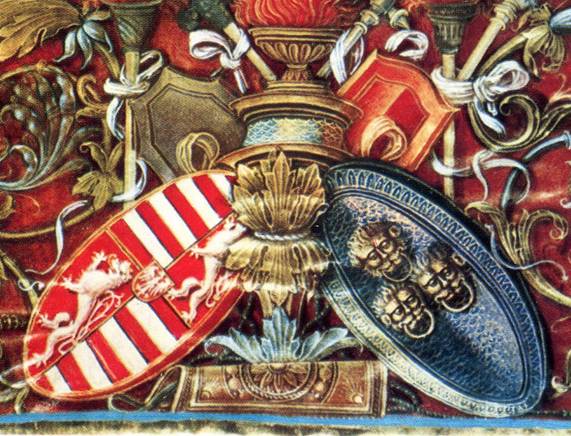

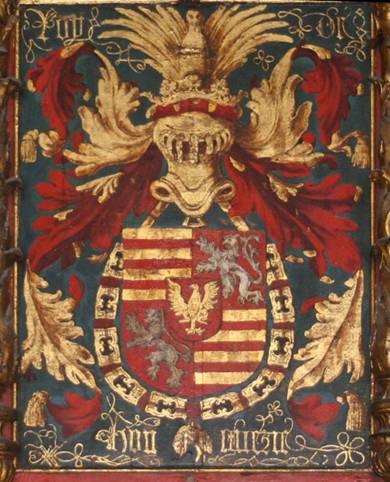
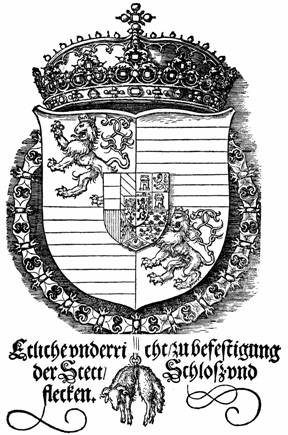
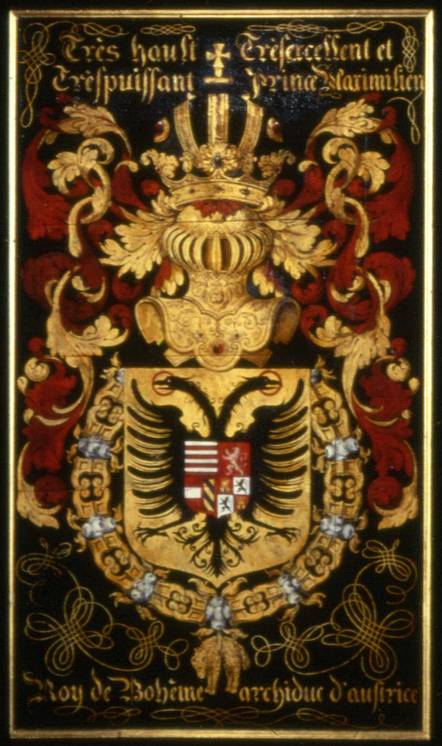
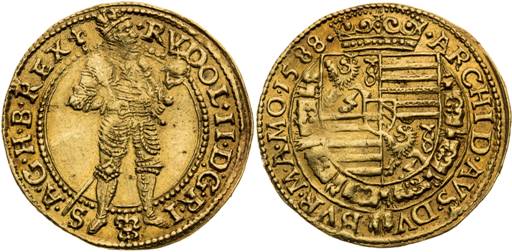
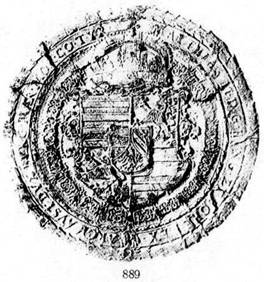
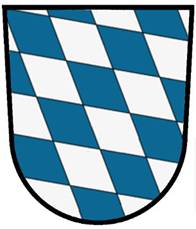
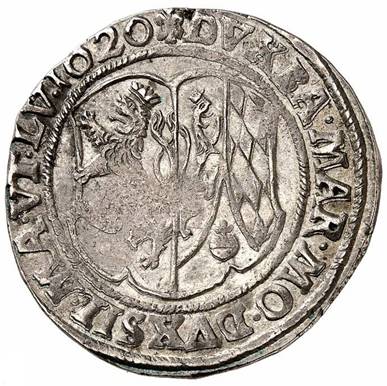
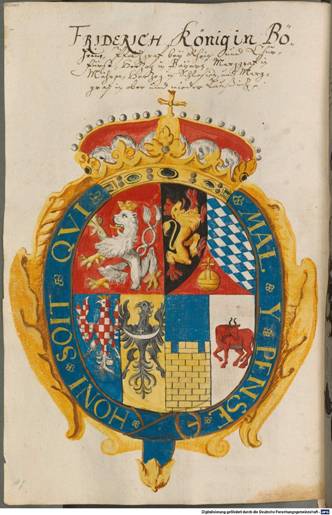
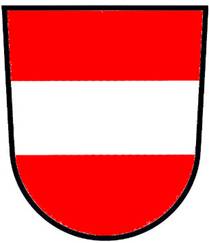
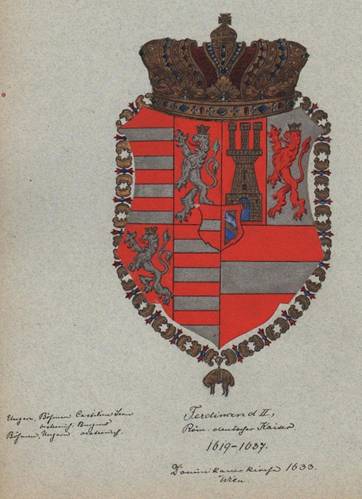
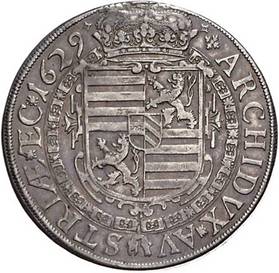
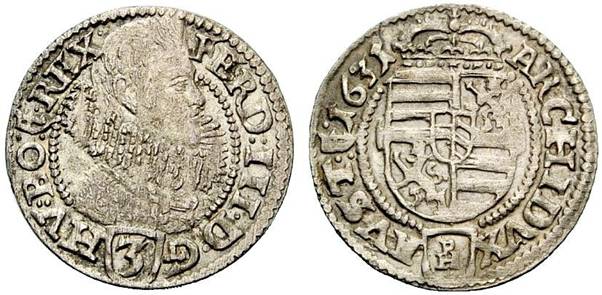
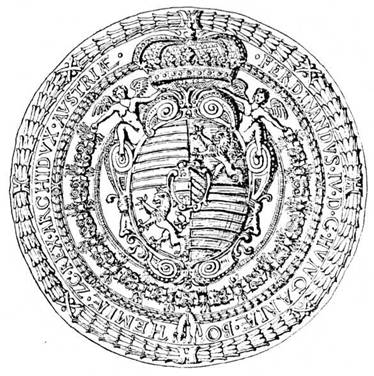
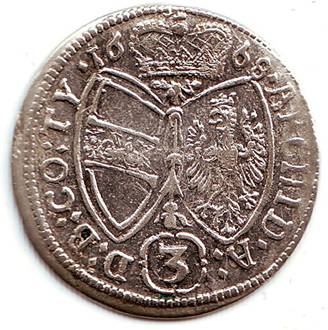
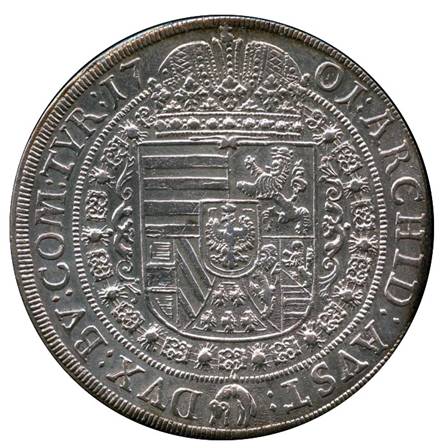
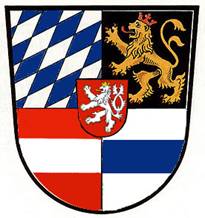
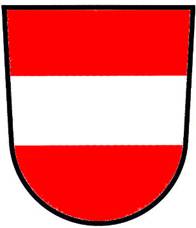
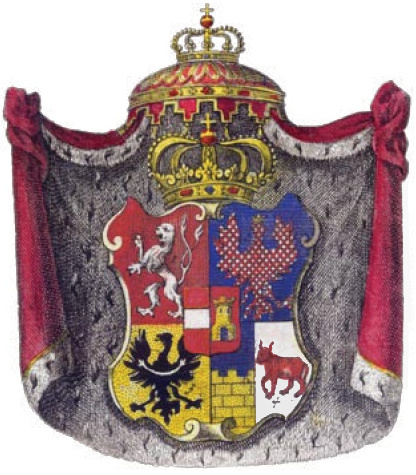
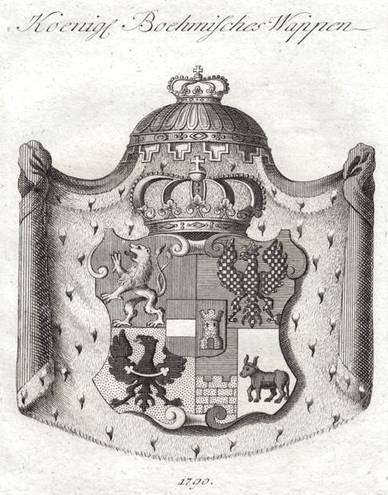
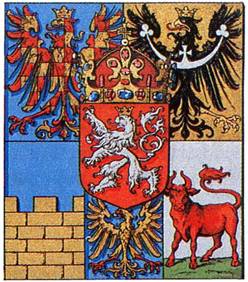
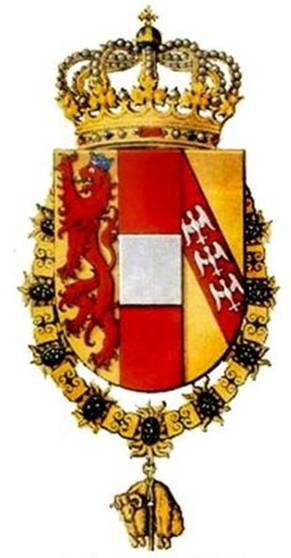
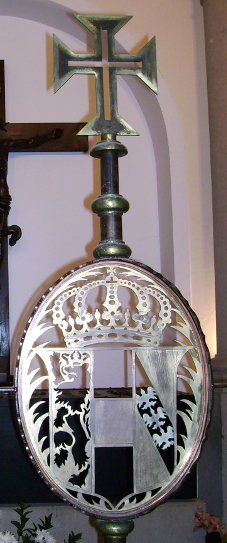
 Heraldry of the World
Heraldry of the World